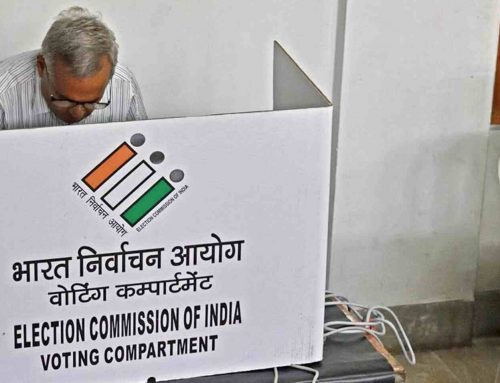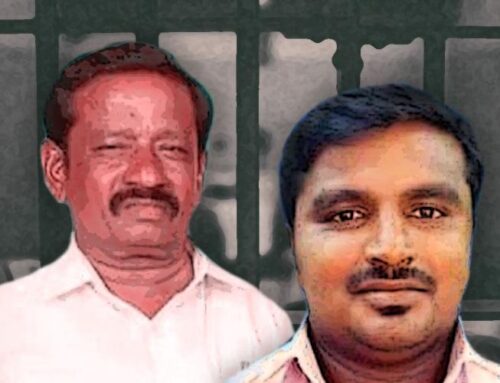–Abul Kalam Azad Sulthan, Advocate, Madurai Bench of High Court of Judicature at Madras
Introduction:
Recently, the Apex Court of India criticized and expressed its concerns on the debased and depraved conditions of the prisons and sub-human treatments to prisoners prevailing in Indian prisons. The shabby structure of the prisons, cram-full and congested prisons, increasing number of under trial prisoners, scantiness of prison staff, deficiency in taking care and treatment of inmates of the prison are the major problems faced by various states in India[1]. Due to the recent rapid upraise in Human Rights advocacy in India, the predicament of prisoners has become a major and clamant issue of public policy.
The Prison system in India is considerably dependent on the State Governments in India as the Prisons in India, and their management and administration is a state subject. Prison and Prison Administration is included as item 4 of the State List in the 7th (Seventh) Schedule of the Indian Constitution. Hence, the prisons and the administration and management of prisons are under the exclusive control of the State governments. The Prisons comes under the Prisons Act, 1900[2] and managed and administered as per the provisions of the Prison manuals of the concerned state governments. Hence the State Governments in India have predominant role and exclusive authority over prisons and to modify/update the present prison manuals and rules. Although the prisons are coming under the exclusive authority of the State Governments, the Central Government is ensuring financial assistance to the states to develop safety of prisons, to restore and refurbish shabby prisons, to improve medical care, upgrading the borstal schools, improving the care, facilities and treatment of women offenders, training in special skills, improvement of industries inside the prisons, psychological and other training to prison staff, and to construct and develop high security stockades. The Apex Court of India, in its judgments on several facets of prisons and the c
How the Indian Legal System treats its prisoners? What are the different international treaties on prison reforms ratified by India?
onditions, has set down three major principles related to custody and imprisonment. First of all, a person who is in prison will not transform as a non-person. Secondly, a person who is confined in a prison is accorded all human rights similar to any other human, but within the limitations of incarceration. Finally, there is no rationale behind the exacerbation of distress which is already innate in the process of internment.
Early History:
Even in ancient India, we had a well organized prison system. According to ancient literatures in India, Brihaspathi who is believed to be a Vedic era sage made much emphasis on confining prisoners in a prison, but Manu (who gave Manusmirithi, the ancient legal text of India) was against the prison system. In Arthashastra, which is an ancient Indian treatise on economic policy, statecraft, and military strategy, Kautilya had stated that rulers in India used fortresses for confining prisoners. Kautilya advocated for the construction of prisons on the sides of roads and he believed that by doing this, the monotony of the prison would be reduced. It was a common practice to confine prisoners in solitary cells. It could bring penance and remonstrance. During the Moghul period and prior to that the object of punishment was deterrence. Hanging, mutilation, whipping, branding and death penalty were the forms of punishment. Prisoners were kept under strict vigil control, supervision and surveillance. In those days prisoners met with inhuman treatment.
British Period:
Many changes were introduced to the prison system by the British rulers in India. Changes were introduced predominantly in the conditions of prisons and treatment of prisoners. In 1836, a Prison Enquiry Committee[3] was appointed. The Prison Enquiry Committee gave a report on the conditions in jail and suggested suitable measures for the administration of prisons. The Committee ruled out the introduction of any reformative ideas in the prison policy. The Committee recommended for the exclusion of all reforming influences such as moral and religious teaching and education on any system of rewards for good conduct. The Committee suggested the building of central prisons where the convicts might be engaged in work, but not in any kind of interesting work including manufacturing and the committee condemned the act of giving manufacturing and other interesting work to prisoners. The Committee recommended to give some dull, monotonous, wearisome and uninteresting work to the prisoners in which the prisoners will feel the pain of incarceration and will understand that a quicker release is possible only with hard work. Since then, the problem of prison was given more importance. Many committees were constituted and on the basis of their recommendations, various new acts were passed.
Another Jail Committee was appointed in the year 1864. This second committee recommended for better clothing, food and regular medical check-up inside the prison.[4]
In the year 1877, the third jail committee was appointed. It did not make any major recommendation. Similar Committees were appointed in 1887 and 1892. The Prison Act, 1894 was passed in accordance with the recommendation of the above committees. The Act did not suggest for any reformative measure. The English principle of deterrence was incorporated in the various sections of the said Act.
The above Committee did not support the practice of prisoners working on roads, and efforts were made to minimize corruption among the prison staff. An Inspector General of Prison was appointed in 1895. He was the Chief Administrator of Prison in India. His main function was to maintain discipline among the prisoners and prison authorities. Medical facilities were also provided to the prisoners.
During the period 1907 to 1920, effective steps were taken for the rehabilitation of the young and juvenile offenders. The juvenile offenders were separated from the adult criminals. Separate institution was established for the juvenile and young offenders. A number of juvenile institutions were established on the model of reformatories and Borstals.
The Jail Committee of 1920 observed, “The Indian Prison Administration has lagged behind on the reformative side of prison work. It has failed so far to regard the prisoner as an individual and has concerned of him rather as a unit in the jail administrative machinery. It has a little lost sight effect in which humanizing and civilizing influences might have on the mind of the individual in prisons”.[5]
The Jail Committee also discouraged the use of corporal punishment in prisons. Prison labor must be productive. Its object must be for the reformation of the offender. The Jail Committee also made valuable suggestions for after care programme and the welfare of the discharged prisoners. During 1950, psychological and psychiatric treatment of the prisoners gained momentum. George B Vold in his work ‘Theoretical Criminology’ observed, “The rehabilitative activities of the modern prison are generally of two kinds, namely, psychological or psychiatric treatment[6] and educational or vocational training programmes”.
After Independence:
After Independence, several changes were made in the prison system in India. In the Constitution, administration of prison was included as a state subject. In the Indian Prisons, an ideal classification of prisoners were followed. The Prisoners availed facilities such as ticket of leave, educational and vocational training and medical facilities. Several Open Air Institutions (Open Air Jail)[7] were established in India.
It is said that the main object of the prison system must be reformation of the offender. Retributive aim must be avoided to the maximum extent. The prison authorities must take sufficient efforts to reform them. There are many persons who commit crimes because of sudden impulsiveness or the compulsion of circumstances. Some offenders might have to undergo the prison term because of miscarriage of justice. They would find it very difficult to adjust with other inmates and the prison officers.[8] The main aim of the prison must be to transform the criminals into normal law abiding citizens. But in practice, the prison authorities enforce discipline and bring out reformation by compulsion or force. Consequently the reformation of the offenders is just momentary. When he is released from the prison, he tends to do criminal acts. Therefore greater emphasis must be made on the reformation[9] of the criminal and his psychiatric conditions.
Discipline in Prison:
Prison disciplinary system reflects the criminal justice processes used in the society. But in prison what is seen by one is, these processes at their extremes. In general, Prison discipline means the regulation or attempt on regulation of the prisoners by means of punishments for infraction of prison rules.
The main aim of the incarceration is to generate a feeling of dislike for prison life among the members of the society. The object is to dissuade people from doing acts which may land them in prisons. William Howard Taft observes, that prisons are so planned as to provide unpleasant compulsory isolation from general society. A prison characterizes rigid discipline, provision for bare necessities, strict security arrangements and monotonous prison life. The prison personnel are usually untrained without specialized training in their field. If the prisoners are not kept under proper control they may become restive. Prison life implies restriction on the liberty of an individual against his will.[10] This compulsive force often leads to confrontation and scuffle between the prison inmates and the officials. The atmosphere inside the prison must satisfy the safety and security of the prisoners. It must also cause minimum amount of confrontation with the prison officials. Another problem which the authorities have to face is the prison riot. Nowadays the difference between the prison life and the life outside of the prison is reduced. Prisoners are aware of their rights and the duties of the prison officials. They can discuss with the other inmates and this gives them an opportunity to join together and complain about any erring officials. In early days, the main reason for prison riots was the partiality and differential treatment by the prison officials and step motherly treatment of the wardens and guards with certain inmates, crude disciplinary actions and monotonous daily routine life etc A study conducted in the United States of America[11] revealed four stages of prison riots. Those are a) a line of period of expressive behavior and destruction; b) small bands of inmates leaders emerged from the turmoil; c) grievances were presented against the administration and appeal were made for public sympathy and support; d) power gradually reverted to the prison authorities.
In India, the system of Self Government in prison hardly been successful. It is because of the lack of general moral discipline, lack of education and the circumstances. In India, a partial Self Government system is adopted. The Prisoners who have behaved well are selected. They have to work with the guards and wardens. They act as a conduit pipe between the Prison authorities and the inmates. They are given facilities. They are allowed to move out of the institution on certain occasions. These concessions have certain merit. They create a sense of trust, loyalty among these prisoners. They also create a psychological feeling among the inmates that if they behave well they can also enjoy the facilities.
Reforms in Indian Criminal Justice System:
The Committee on Reforms of the Criminal Justice System was constituted by the Ministry of Home Affairs, Government of India, on 24th November 2000. The terms of reference:
- To examine the fundamental principles of criminal jurisprudence.
- To examine in the light of findings on fundamental principles and aspects of criminal jurisprudence as to whether there is a need to re-write, the Code of Criminal Procedure, the Indian Penal Code and the Indian Evidence Act to bring them in tune with the demand of the times and in harmony with the aspirations of the people of India.
- To make specific recommendations on simplifying judicial procedures and practices and making the delivery of justice to the common man closer, faster, uncomplicated and inexpensive.
- To suggest ways and means of developing such synergy among the Judiciary, the Prosecution and the Police as it restores the confidence of the common man in the Criminal Justice System by protecting the victim and the innocent men from getting affected by the evils and by punishing the guilty and the criminal unsparingly.
- To suggest sound system of managing on professional lines, the pendency of cases at investigation and trial stages and making the police, the prosecution and the Judiciary accountable for the delays in their respective domains.
- To examine the feasibility of introducing the concept of “Federal Crime” which can be put on the List I of the Seventh Schedule of the Constitution of India.
The Committee headed by the Former Chief Justice of Kerala and Karnataka, and Member of the National Human Rights Commission (NHRC), Justice V.S.Malimath, submitted its report including 158 recommendations[12] to the Ministry of Home Affairs, on 21st April 2003. Based on the recommendations, Government of India has introduced various amendments to the Code of Criminal Procedure.
Prison Reforms:
It was suggested for better prison reforms[13] as follows:
- There shall be a Department of Prisons and Correctional Services in each State. This has been implemented in all the states in India.
- Under-trial prisoners shall not be detained unnecessarily. If detained, they shall be confined separately.
- Living conditions in prisons shall be improved in prisons.
- Adequate resources shall be provided to prisons.
- Like United States of America, every ideal prison should have a hospital and psychological clinic.
Treatment of Prisoners:
In India, Prisoners are classified[14] on the basis of age, sex, mental health, nature of offense and the frequency of the commission of crimes. Generally prisoners are categorized into A and B classes. The criteria for A Class are social status, education, living condition, character and antecedents. Those convicted for offenses involving gross depravation of character and moral turpitude and for offenses against the society, are not eligible for A Class.
The Central Prisons and the Jails have both custodial and correctional staff who include medical doctors, psychologists, welfare officers, social workers, teachers and vocational instructors. The hierarchy of the custodial staff in the prison system takes the following form: Superintendent, Jailer, Deputy Jailer, Assistant Jailer, Head Warders and Warders.
Vegetarian and Non-Vegetarian food is provided at fixed costs, which are slightly higher for A Class prisoners. A Special diet is also available for women and their babies, and for sick prisoners on medical advice. Each central prison has a hospital with a part time medical officer. Writing and receiving letters and interviews with relatives are permitted. Recreation in the form of games, yoga, television watching and meditation classes are also available.
International treaties on prison reforms ratified by India:
The International Covenant on Civil and Political Rights (ICCPR) is the vital international treaty in relation to the preservation of the rights of the prisoners. India executed this treaty and ratified in 1979.[15] Hence India is legally bound to subsume the provisions of the covenant into the law of the land and practices across various states of India.
On 10 Apr 1979, India ratified The International Covenant on Economic, Social and Cultural Rights (ICESCR). This covenant states that “Health is a fundamental human right indispensable for the exercise of other human rights. Each and Every human being is permitted to the benefit of the highest attainable standard of health conducive to living a life in dignity”. When it says every human being, it includes prisoners too. Hence the Prisoners have Civil and Political Rights as enumerated in the International Covenant on Civil and Political Rights (ICCPR) as well as the economic, social and cultural rights as bestowed by the International Covenant on Economic, Social and Cultural Rights (ICESCR). [16]
United Nations Standard Minimum Rules for the Treatment of Prisoners (Nelson Mandela Rules) were adopted in 1955 by the United Nations Congress on the Prevention of Crime and the Treatment of Offenders. It was approved in 1957 by the United Nations Economic and Social Council (UNESCO). On 17 December 2015 a revised version of the United Nations Standard Minimum Rules for the Treatment of Prisoners were adopted by the 70th session of the United Nations General Assembly unanimously. These revised United Nations Standard Minimum Rules for the Treatment of Prisoners are named as the ‘Nelson Mandela Rules‘ to honour the legacy of the late President of South Africa, Mr. Nelson Rolihlahla Mandela, who spent so many years of his life in prison. [17]
According to this Standard Minimum Rules, there shall not be any discrimination on the basis of race, colour, sex, language, religion, political or other opinion, national origin, social origin, property, birth and other statuses. But, at the same time, it is important to respect the religious belief of the group to which the prisoner belongs to. The Standard Minimum Rules also give importance to the categorization of the various categories of the prisoners.[18] According to the Standard Minimum Rules, men and women should be confined separately. The Under-Trial prisoners should be kept separately. They should not be allowed to mingle with convicted prisoners. Moreover the Standard Minimum Rules makes it necessary to separate the Civil Prisoners and Prisoners detained for Criminal offences. The United Nations Standard Minimum Rules also provides for the separate institutions to accommodate the Young and Child prisoners.
Basic Principles for the Treatment of Prisoners was adopted and proclaimed by United Nations General Assembly on 14 December 1990. It clearly states that ” Except for those limitations that are demonstrably necessitated by the fact of incarceration, all prisoners shall retain the human rights and fundamental freedoms set out in the Universal Declaration of Human Rights, and, where the State concerned is a party, the International Covenant on Economic, Social and Cultural Rights, and the International Covenant on Civil and Political Rights and the Optional Protocol thereto, as well as such other rights as are set out in other United Nations covenants.”[19]
Body of Principles for the Protection of All Persons under Any Form of Detention or Imprisonment states that “No person under any form of detention or imprisonment shall be subjected to torture or to cruel, inhuman or degrading treatment or punishment. No circumstance whatever may be invoked as a justification for torture or other cruel, inhuman or degrading treatment or punishment”.
Conclusion:
According to the UN Global Report[20] on Crime and Justice, the imprisonment rate in India is very low comparing other developing and developed countries. In India, we have twenty five prisoners per every one Lakh Population. In Australia, there are 981 prisoners per every one lakh of population, in England, 125 prisoners per lakh of population and 616 prisoners in United States of America and 690 prisoners in Russia per lakh of population. But a large portion of prisoners in India (almost 90%) are first time offenders. The rate of recidivists is also high in Indian Prisons which is quiet daunting.
“In prison, those things withheld from and denied to the prisoner become precisely what he wants most of all. – Eldridge Cleaver”
Works Cited – Bibliography
[1] Indian Prison Systems – Amarendra Mohanty, Narayan Hazary
[2] Prisons and Prison Systems: A Global Encyclopedia – Page 134 – Mitchel P. Roth
[3] The Modern Prison System of India – Frederic Allan BARKER
[4] Indian Prison: A Sociological Enquiry – Page 17 – Indra Jeet Singh
[5] Open Prisons and the Inmates: A Socio-psychological Study – Shubra Ghosh
[6] Ethical Issues in Prison Psychiatry – Page 54 – Norbert Konrad, Birgit Völlm, David N. Weisstub
[7] Open Prisons and the Inmates: A Socio-psychological Study – Shubra Ghosh
[8] Prison Management: Problems and Solutions – M.B. Manaworker
[9] Ethical Issues in Prison Psychiatry – Page 54 – Norbert Konrad, Birgit Völlm, David N. Weisstub
[10] Prisons and Society: A Study of the Indian Jail System – Jaytilak Guha Roy
[11] The Treatment of Prisoners Under International Law – Page 177 – Nigel Rodley, Matt Pollard
[12] Human Rights – Anuradha Kumar
[13] Prisoners’ Rights – John Kleinig
[14] Prison Management: Problems and Solutions – M.B. Manaworker
[15] Prisoners’ Rights – John Kleinig
[16] Prisoners’ Rights: Principles and Practice – Page 49 – Susan Easton
[17] The Abolition of the Death Penalty in International Law – Page 212 – William Schabas
[18] The Treatment of Prisoners: Legal, Moral Or Criminal? – Page 164 – Ralph D. McPhee
[19] The Handbook of International Humanitarian Law – Page 361 – Dieter Fleck, Michael Bothe
[20] International Law and Institutions: – Page 90 – Aaron Schwabach, Arthur John Cockfield







Its not my first time to pay a quick visit this web page, i am visiting this web site daily and
get good facts from here everyday.
Only wanna remark on few general things, The website style and design is perfect, the subject matter is really fantastic. “Good judgment comes from experience, and experience comes from bad judgment.” by Barry LePatner.